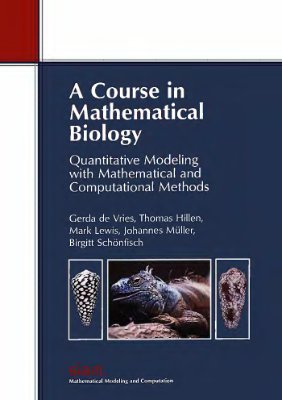SIAM, 2006. - 309 pages.
This is the only book that teaches all aspects of mode mathematical modeling and that is specifically designed to introduce undergraduate students to problem solving in the context of biology. Included is an integrated package of theoretical modeling and analysis tools, computational modeling techniques, and parameter estimation and model validation methods, with a focus on integrating analytical and computational tools in the modeling of biological processes. Divided into three parts, it covers basic analytical modeling techniques; introduces computational tools used in the modeling of biological problems; and includes various problems from epidemiology, ecology, and physiology. All chapters include realistic biological examples, including many exercises related to biological questions. In addition, 25 open-ended research projects are provided, suitable for students. An accompanying Web site contains solutions and a tutorial for the implementation of the computational modeling techniques. Calculations can be done in mode computing languages such as Maple, Mathematica, and MATLAB®.
Contents: Preface; Part I. Theoretical Modeling Tools: Introduction; Discrete-time models;
Ordinary differential equations; Partial differential equations; Stochastic models; Cellular automata and related models; Estimating parameters; Part II. Self-guided Computer Tutorial: Maple course;
Part III. Projects: Project descriptions; Solved projects; Appendix; Bibliography; Author index; Index.
This is the only book that teaches all aspects of mode mathematical modeling and that is specifically designed to introduce undergraduate students to problem solving in the context of biology. Included is an integrated package of theoretical modeling and analysis tools, computational modeling techniques, and parameter estimation and model validation methods, with a focus on integrating analytical and computational tools in the modeling of biological processes. Divided into three parts, it covers basic analytical modeling techniques; introduces computational tools used in the modeling of biological problems; and includes various problems from epidemiology, ecology, and physiology. All chapters include realistic biological examples, including many exercises related to biological questions. In addition, 25 open-ended research projects are provided, suitable for students. An accompanying Web site contains solutions and a tutorial for the implementation of the computational modeling techniques. Calculations can be done in mode computing languages such as Maple, Mathematica, and MATLAB®.
Contents: Preface; Part I. Theoretical Modeling Tools: Introduction; Discrete-time models;
Ordinary differential equations; Partial differential equations; Stochastic models; Cellular automata and related models; Estimating parameters; Part II. Self-guided Computer Tutorial: Maple course;
Part III. Projects: Project descriptions; Solved projects; Appendix; Bibliography; Author index; Index.

